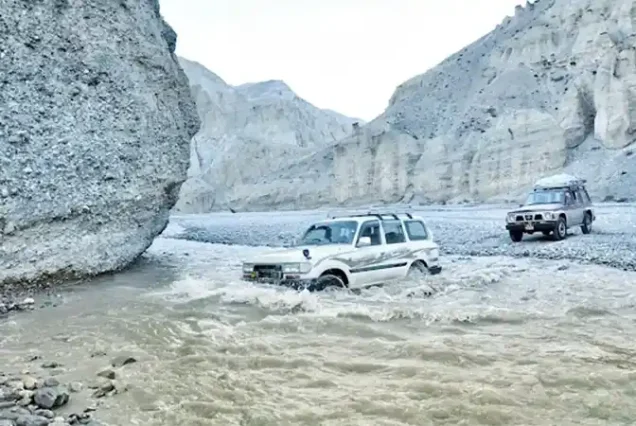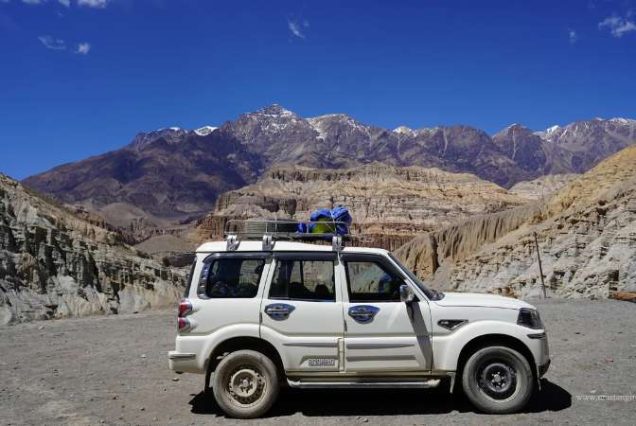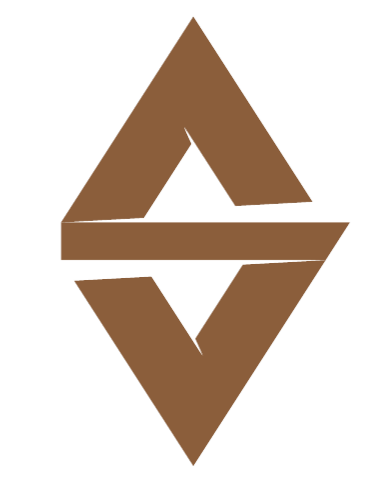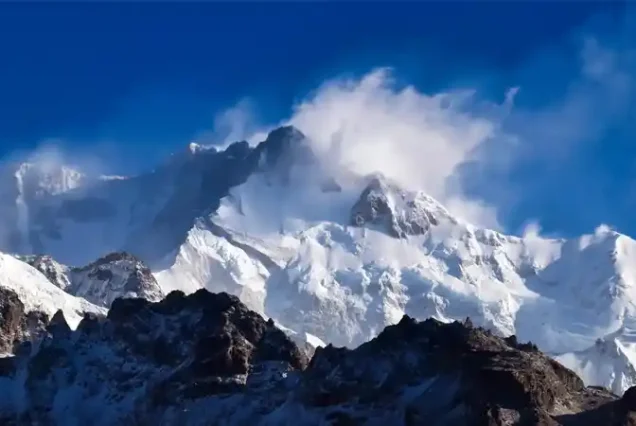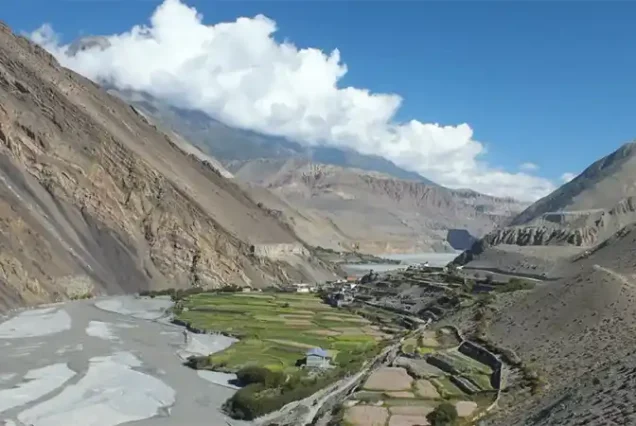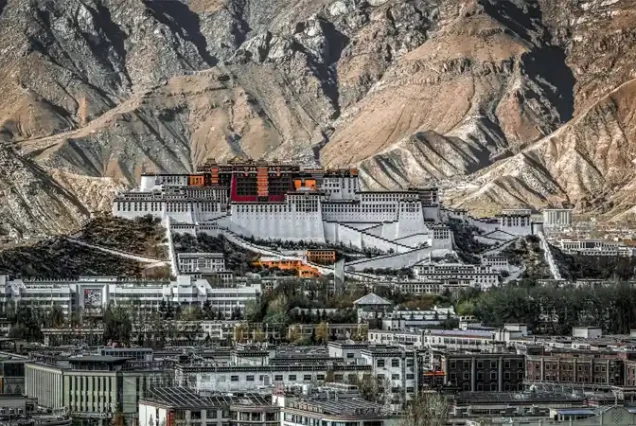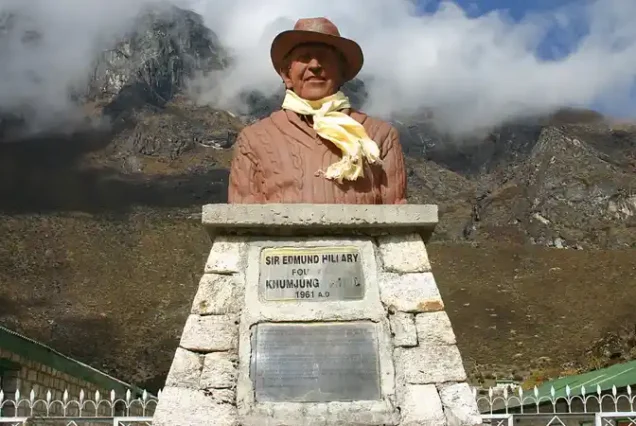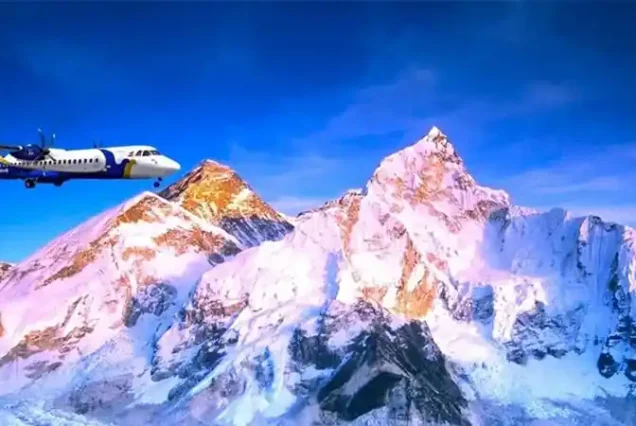Upper Mustang Jeep Tour
Duration
13 Days
Max People
50
Min Age
10+
Pickup
Kathmandu
Upper Mustang Jeep Tour 12 Nights 13 Days
Upper Mustang Jeep tour that drive you to the walled city of Lo-Manthang, capital of Mustang, have attracted tourists since tourists were first allowed to enter the forbidden Kingdom of Mustang. This is a historic place with uncountable cliffs and sky caves, a mountain desert landscape, and arid and high-altitude land all together. Now, with the advent of a rough jeep road that extends up through the spectacular Kali Gandaki Valley, between Annapurna and Dhaulagiri, it is possible to travel between and beyond the Himalayas onto the Tibetan Plateau and reach Lo Manthang by Jeep Drive. The ochre-colored, wind-eroded, untamed wildness of Mustang remains the same.
So far, a special permit is required for the foreigner. On this Upper Mustang Jeep Drive Tour, you can now reach Lo-Manthang and explore this once-forbidden mountain scrape without having to trek hard and long. Our Mustang Jeep Tour from Pokhara to Lo Manthang over land is very much an adventurous Nepal cultural tour. The landscape and the journey are on a bumpy, dusty road that remains at the mercy of the mountain gods and the climate.
We carefully considered that it is preferable not to spend “all day, every day” driving while planning our suggested route because it is a slow and bumpy trip. On the way to Lo-Mangthang, we will explore some villages and stop at view points. We stayed for some nights in ‘comfort lodges’.
Book your Upper Mustang trip with us! Shangri-La Voyages Team
Includes & Excludes
- Meet, assist at the airport by our representative.
- Arrival/Departure transfers by air-conditioned vehicle.
- 03 Nights’ accommodation in Kathmandu on BB plan.
- 03 Night accommodation in Pokhara on BB plan.
- 6 Nights – 07 days Jeep drive to upper Mustang on full board basis using normal lodges’ in-route.
- Local English speaking guide as per the itinerary.
- Annapurna Conservation Area Project fee and Trekkers’ Information Management system.
- A comprehensive medical kit.
- Transfer from Pokhara / Lo-Manthang / Pokhara.
- Special permit for upper Mustang.
- Monastery entrance fees during trek.
- Airfare for the sector Pokhara / Kathmandu including domestic airport taxes and airport transfers.
- Bottled water on board.
- Insurance for local guide.
- All currently applicable taxes.
- International airfare.
- Nepal visa fee.
- Camera fee.
- Personal trekking equipment such as sleeping bags and duffel bags.
- Shower in Lodges except at Thasang Lodge.
- Any beverages, including mineral water, soft drinks, alcoholic drinks etc.
- Meals not mentioned in the above itinerary.
- Any items of a personal nature such as laundry, telephone calls etc.
- The prices do not include: undue escalation in fuel prices, new taxes levies on hotels and transportation services or any hikes in entrance fees. Any large tax hikes and new levies shall be payable extra and shall be billed accordingly with prior notice.
- Rescue and Evacuation.
- Tips for the staffs.
- Multi risk insurance covering emergency evacuation by helicopter if required.
- First aid kit.
- Any other items not mentioned in the cost inclusion.
- Insurance.
Departure Dates
Equipments
Altitude sickness and acclimatization
AMS – Acute Mountain Sickness
Commonly called as altitude sickness, this has the potential to affect all trekkers from an altitude of 2500m and higher. Your body needs days to adjust to smaller quantities of oxygen in the air – at 5500m/18,044ft the air pressure is approximately half that of sea level, i.e., there is half the amount of oxygen (and nitrogen). This is approximately equivalent to the top of Kala Pattar, in the Everest region, and the top of the Thorung La on the Annapurna Circuit.
For treks below an altitude of about 3000m/10,000ft it is not normally a problem. AMS is caused by going up high too fast and can be fatal if all the warning signals are ignored. Note that it is not the actual altitude, but the speed at which you reach higher altitudes which causes the problems.
Altitude sickness is preventable. Go up slowly, giving your body enough time to adjust. These are the ‘safe’ rates for the majority of trekkers: spend 2-3 nights between 2000m/6562ft and 3000m/10,000ft before going higher. From 3000m onwards when you climb an average altitude of 300m/1000ft each day, you will fell little a bit dizzier and sleepy, this is the symptom of acute mountain sickness. Ultimately it is up to you to recognize the symptoms, and only ascend if you are relatively symptom-free.
Normal symptoms at altitude
Don’t expect to feel perfect at altitudes of more than 3000m. These are the normal altitude symptoms that you should expect but not worry about. Every trekker will experience some or all of these, no matter how slowly they ascend.
Periods of sleeplessness.
The need for more sleeps than normal, often 10 hours or more.
Occasional loss of appetite.
Vivid, wild dreams at around 2500-3800m in altitude.
Unexpected momentary shortness of breath, day and night.
Periodic breathing that wakes you occasionally – consider taking Diamox.
The need to rest/catch your breath frequently while trekking, especially above 4000m.
Your nose turning into a full-time snot factory.
Increased urination – many trekkers have to go once during the night (a good sign that your body is acclimatizing).
Mild Symptoms
You only need to get one of the symptoms to be getting altitude sickness, not all of them.
Headache is common among trekkers. Often a headache comes on during the evening and worsens during the night. Raising your head and shoulders while trying to sleep, sometimes offers partial relief. If it is bad you may want to try taking a painkiller: aspirin (dispirin), paracetamol, Ibuprofen (Aduil) or acetamenophen (tylenol). Never take sleeping tablets. You could also take Diamox: see below. Headaches arise from many causes, for example, dehydration, but if you develop a headache assume it is from the altitude.
Nausea (feeling sick) – can occur without other symptoms, but often nausea will develop with a bad headache. If you are better in the morning take a rest day, or if you still feel bad descend.
Dizziness (mild) – if this occurs while walking stop out of the sun and have a rest and drink. Stay at the closest teahouse or local lodge.
Painful cough or a dry raspy cough.
In other words anything other than diarrhea or a sore throat could be altitude sickness. Assume it is, because if you have a headache from dehydration, ascending further is not dangerous, but if it’s due to AMS, the consequences could be very serious. You cannot tell the difference, so caution is the safest course.
Do not try to deceive yourself and accept that you body needs more time to adapt.
Basic rule: Never go higher with mild symptoms.
If you find mild symptoms developing while walking, stop and relax with your head out of the sun and drink some fluids. If the symptoms do not go away completely then stay in same altitude or if symptoms get worse, go down. A small loss of elevation (100-300m/328-984ft) can make a big difference to how you feel and how you sleep. Descend to the last place where you felt good. If symptoms develop at night then, unless they rapidly get worse, wait and see how you feel in the morning. If the symptoms have not gone after breakfast then have a rest day or descend. If they have gone, consider having a rest day or an easy days walking anyway.
Continued ascent is likely to bring back the symptoms. Altitude sickness should be reacted to, when symptoms are mild – going higher will definitely make it worse. You trek to enjoy, not to feel sick.
Note also that there is a time lag between arriving at altitude and the onset of symptoms and in fact it is common to suffer mild symptoms on the second night at a set altitude rather than the first night.
Serious Symptoms
Persistent, severe headache.
Persistent vomiting
Ataxia – loss of co-ordination, cannot walk in a straight line, looks drunk
Losing consciousness – cannot stay awake or understand things very well
Liquid sounds in the lungs
Very persistent cough
Real difficulty breathing
Rapid breathing or feeling breathless at rest
Coughing blood or pink goo or lots of clear fluid
Marked blueness of face and lips
High resting heart beat – over 120 beats per minute
Severe lethargy and drowsiness
Mild symptoms rapidly getting worse
Ataxia is the single most important sign for recognizing the progression from mild to severe. This is easily tested by trying to walking a straight line, heel to toe. Compare with somebody who has no symptoms. 24 hours after the onset of ataxia a coma is possible, followed by death, unless you descend.
Basic rule: Immediate and fast decent with severe symptoms
Take as far down as possible, even if it is during the night. (In the Everest region: if you are above Pheriche, go down to the HRA post there. From Thorung Phedi or nearby: take to the Manang HRA post.) The patient must be supported by several people or carried by a porter – his/her condition may get worse before getting better. Later the patient must rest and see a doctor. People with severe symptoms may not be able to think for themselves and may say they feel OK. They are not.
Medical Conditions
High Altitude Cerebral Oedema (HACE) – this is a build-up of fluid around the brain. It causes the first 4 symptoms of the mild, and the severe symptom lists.
High Altitude Pulmonary Oedema (HAPE) – this is an accumulation of fluid in the lungs, and since you are not a fish, this is serious. It is responsible for all the other mild and serious symptoms.
Periodic breathing – the altitude affects the body’s breathing mechanism. While at rest or sleeping your body feels the need to breathe less and less, to the point where suddenly you require some deep breaths to recover. This cycle can be a few breaths long, where after a couple breaths you miss a breath completely, to being a gradual cycle over a few minutes, appearing as if the breathing rate simply goes up and down regularly. It is experienced by most trekkers at Namche, although many people are unaware of it while sleeping. At 5000m/16,404ft virtually all trekkers experience it, although it is troublesome only for a few. Studies have so far found no direct link to AMS.
Swelling of the hands, feet, face and lower abdomen – remove rings. An HRA study showed that about 18% of trekkers have some swelling, usually minor. Females are definitely more susceptible. It is not a cause for concern unless the swelling is severe, so continuing ascent is okay.
Altitude immune suppression – at base camp altitudes cuts and infections heal very slowly so for serious infections descent to Namche level is recommended. The reasons are not well understood.
Drugs you can take – Diamox (Acetazolamide)
This is a mild diuretic (makes you pee a lot) that acidifies the blood which stimulates breathing. Previously it was not recommended to take it as a prophylactic (i.e., to prevent it, before you get it) unless you ascend rapidly, unavoidably (eg flying to Lhasa or rescue missions), or have experienced undue altitude problems previously.
However, now some doctors are coming around to the idea that many people trekking above 3500m should take it using the logic that it has the potential to reduce the number of serious cases of AMS: the benefits may outweigh the risks. This topic still requires in depth research. Diamox is a sulfa drug derivative, and people allergic to this class of drugs should not take Diamox. People with renal (kidney) problems should avoid it too. (It also apparently ruins the taste of beer and soft drinks). The side effects are peeing a lot, tingling lips, fingers or toes but these symptoms are not an indication to stop the drug.
The older accepted recommendations are to carry it and consider using it if you experience mild but annoying symptoms, especially periodic breathing that continually wakes you up. The dosage is 125 to 250 mg (half to a whole tablet) every 12 hours. Diamox actually helps the root of the problem; so if you feel better, you are better. It does not simply hide the problem. However this does not mean that you can ascend at a faster rate than normal, or ignore altitude sickness symptoms – it is quite possible still to develop AMS while taking it. Note that it was recommended to start taking the drug before ascending for it to be most effective. This is not necessary, but it does help.
Doctors Notes
HACE – can occur in 12 hours but normally 1-3 days. At first sign of ataxia begin descent. If it is developed try 4mg of dexamethazone 6 hourly, Diamox 250mg 12 hourly and 2-4l/min O2 or a Gamow bag (if available).
HAPE – descend, Diamox 250mg 12 hourly, Nifed orally, 10mg 8 hourly and 2-4l/min O2 or a Gamow bag.
Oxygen – supplementary O2 does not immediately reverse all the symptoms although it does help significantly. Descent in conjunction with O2 is more effective.
Gamow bag/PAC bag/CERTEC bag – the latest devices to assist with severe AMS. Basically it is a plastic tube that the patient is zipped into. A pump is used to raise the pressure inside the bag simulating going to a lower altitude. It is very effective.
HAF – high altitude farts – slang for HAFE.
HAFE – high altitude flatulence emission. The cure – let it rip! You’re not a balloon that needs blowing up.
AMS practical
Rates of acclimatization
Individual rates of acclimatization vary enormously but ascending very rapidly and staying there will always result in problems. Even Sherpas who live in Kathmandu upon returning to the Khumbu occasionally get AMS. Studies have shown that people who live at moderate altitudes (1000-2000m/3281-6562ft are acclimatized to those altitudes. They are much less susceptible to AMS when ascending to around 3000m/9842ft (i.e., going to Namche).
However the benefits decrease once higher and they should follow the same acclimatization program as others. This has implications for people who have spent a week or two in Kathmandu (at an altitude of 1400m/4593ft): they are becoming acclimatized to that altitude. For trekkers that fly from sea level to Kathmandu then almost immediately walk to Namche, they have no advantage and are more likely to suffer AMS. Unfortunately it is usually these people who are in a hurry to go higher. This is perhaps why it appears that group trekkers are initially more susceptible to troublesome AMS than individual trekkers, who often walk from Jiri or spend time in Kathmandu beforehand.
The acclimatization Process
In a matter of hours your body quickly realizes that there is less oxygen available and it first reaction is to breathe more – hyperventilate. This means more oxygen (O2) in but also more carbon dioxide (CO2) is breathed out and with the O2-CO2 balance upset the pH of the blood is altered.
Your body determines how deeply to breathe by the pH level (mainly the dissolved CO2 in your blood) – at sea level a high level of exertion means your muscles produce a lot of CO2 so you breathe hard and fast. While resting, your body is using little energy so little CO2 is produced, demonstrating that you only need to breathe shallowly.
The problem is at altitude this balance is upset and your body often believes that it can breathe less than its real requirements. Over several days your body tries to correct this imbalance by disposing of bicarbonate (CO2 in water) in the urine to compensate, hence the need to drink a lot because it is not very soluble. Diamox assists by allowing the kidneys to do this more efficiently therefore enhancing some peoples ability to acclimatize. In addition, after a day or two, the body moves some fluid out of the blood effectively increasing the haemoglobin concentration. After 4-5 days more new red blood cells are released than normal.
Individual rates of acclimatization are essentially dependent on how fast your body reacts to compensate the altered pH level of the blood. For slow starters Diamox can provide a kick-start but for people already adapting well the effect often less noticeable.
If you stay at altitude for several weeks there are more changes, your muscles’ mitochondria (the energy converters in the muscle) multiply, a denser network of capillaries develop and your maximum work rate increases slowly with these changes. Expeditions have often run medical programs with some interesting results.
Climbers who experience periodic breathing (the majority) at base camp never shake it off and have great difficulty maintaining their normal body weight. Muscles will strengthen and stamina is increased but not the muscle bulk. Interestingly Sherpas who have always lived at altitude, never experience periodic breathing and can actually put on weight with enough food.
How long does acclimatization last?
It varies, but if you were at altitude for a month or more your improved work rates can persist for weeks meaning you still feel fit upon returning to altitude. You still should not ascend faster than normal if you return to sea level for a few days, otherwise you are susceptible to HAPE.
If you have been to 5000m/16,404ft then go down to 3500m/11,483ft for a few days, returning rapidly to 5000m/16,404ft should cause no problems, i.e., having been to Lobuche and Kala Pattar, than rested for two days in Namche you should be able to ascend to Gokyo quickly without problems.
Sleeping at altitude
Many people have trouble sleeping in a new environment, especially if it changes every day. Altitude adds to the problems. The decrease of oxygen means that some people experience wild dreams with this often happening at around 3000m. Compound this with a few people suffering from headaches or nausea, a couple of toilet visits, a few snorers and periodic breathers, and it takes someone who sleeps like the proverbial log (or very tired trekker) to ignore all the goings on at night in a large dormitory. Smaller rooms are a definite improvement, and tents, although not soundproof are still manage to be relatively peaceful.
Appetite
Some people lose appetite and do not enjoy eating. Sometimes equally worrying, although it is a good sign is a huge appetite. Your energy consumption, even at rest is significantly higher than normal because your body is generating heat to combat the constant cold, especially while sleeping. Energetic trekkers, no matter how much they eat will often be unable to replace the huge quantities of energy used.
Day trips and what to do if…
The normal accepted recommendations are to go high during the day and sleep low at night, the sleeping altitude being the most important. This is fine for trekkers experiencing no AMS symptoms whatsoever, and will probably aid the acclimatization process, for example in the Everest region, going up to Chukhung from Dingboche or Pheriche, or visiting Thame from Namche. However if you are experiencing mild or even very mild AMS then this is not the best advice. Instead your body is already having trouble coping so it doesn’t need the additional stress of more altitude. Instead stay at the same elevation. Mild exercise is considered beneficial, rather than being a total sloth but take it as a rest day.
If you have troublesome mild symptoms then descent for a few hours may even be more beneficial.
Trip Notes
To book, please email us at [email protected] or fill out the booking form provided.
Tour Plan
Tour Map
We operate tour, trekking and rafting in all over Nepal, Tibet, Bhutan and North East India, to the canyons, to the mountains, to the rivers and beyond.
Quick Links
About Company
- © 2025 Shangri La Voyages All Rights Reserved.







